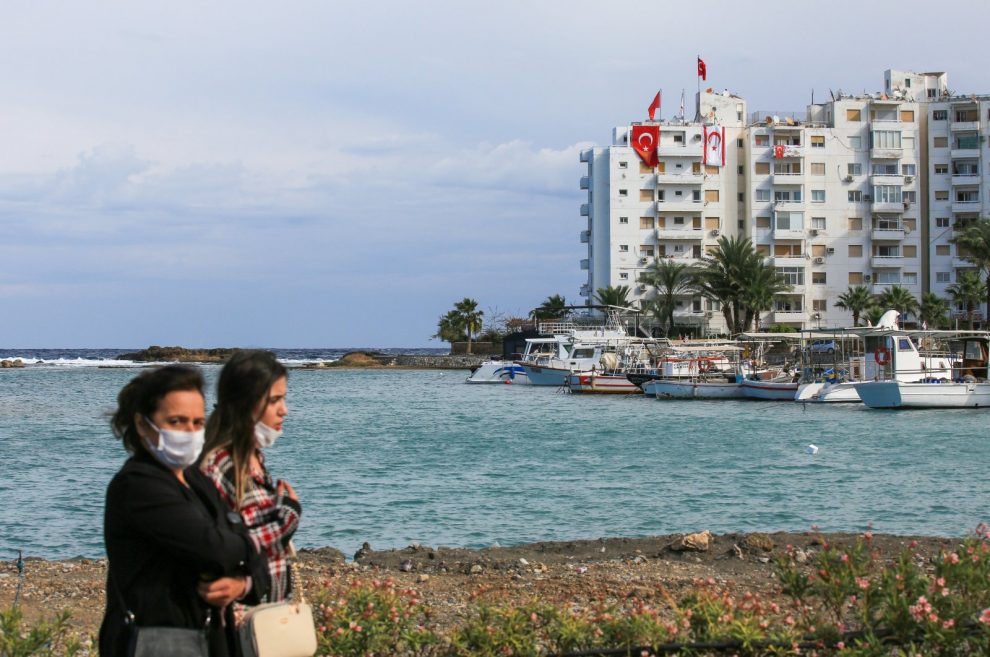They all call it the “Turkish invasion of Cyprus” in unison; we call it the “Cyprus peace operation” for a reason.
I was working as foreign news editor in those days, and we were all sick and tired of cropping and resizing the terrible images of the murdered Cypriot Turks – killed by the invading Greek army units and local Cypriot Greek militia. We used to crop those photographs so that we wouldn’t be printing grotesque images that could incite the public in Turkey. Yet, the whole country was on the edge because of the increasing number of murders.
Every day we had newsflash bulletins about new massacres of Turks coming to Cyprus, committed by the coup of Nikos Sampson.
There already were a large number of Greek soldiers on the island in spite of the open condemnation by the archbishop and legal president of the Cyprus Republic, Makarios III.
When Makarios became a true roadblock to the unification of Cyprus and Greece (Enosis) the Greek military junta ordered a coup against Archbishop Makarios that was staged by the Greek army units and Cypriot National Guard in conjunction with EOKA-B, a clandestine organization trying to annex Cyprus to Greece.
The Greek army deposed Makarios and installed Nikos Sampson, who announced the union (Enosis) of Cyprus with Greece and that the Hellenic Republic of Cyprus was about to be declared.
The Regime of the Colonels, a far-right military junta that deposed the democratic government and ruled Greece after 1967, we now know, had the United States behind it. Published memoirs and documents show that U.S. ambassador William Phillips Talbot “blessed an extra-parliamentary solution to the Greek problem.”
According to Cyrus L. Sulzberger, a correspondent for The New York Times, the U.S. involvement was more than simple blessings for the coup because the U.S. was afraid that the communists could retake the government.
The Greek scholar Christos Kassimeris found out that even in 1952 NATO had entertained the “idea that a dictatorship was the only possible solution to Greece’s problems.
‘Democratization’ program
After seven long years, the Greek junta was about to implement what they had called the “democratization” program.
However, it was not the right-wing politicians but the socialist and communist civilians who were about to seize power. After a coup-within-coup the hardliner Dimitrios Ioannidis wanted to prolong the military rule, in his own words, doing “something outrageous.”
That “something” turned out to be a military invasion of Cyrus and the eradication of Turks from the face of the island.
Those encyclopedia writers and website editors as well as the U.S. State Department press bulletin authors should know what was the real invasion and what was the peace operation that not only put an end to the systematic destruction of the Turkish population on Cyprus but that also prevented the annexation of the island to Greece.
Yes, in 1974, the Turkish operation forced more than 100,000 Cypriot Greeks to move from the northern half of the island to the south, but that was the only way to bring an end to the insidious killings of Turks by their Greek neighbors since the creation of an independent Cyprus in 1960 after the long years of the British occupation.
Numerous atrocities against the Turkish Cypriot community were committed even during the British invasion and afterward.
It was a long and bloody history etched in the memories of the Cypriot Turks. After the real peace brought in by the Turkish military operation in 1974, the Turkish community would not risk losing it.
Europe ‘reports’
The European Commission of Human Rights – which had not protested for instance the Maratha, Santalaris and Aloda massacres by the Greek militias when 126 people were killed or the Tochni massacre, where 85 Turkish Cypriot inhabitants were massacred – shamelessly issued reports that found Turkey guilty of repeated violations of the European Convention of Human Rights.
Europeans should notice one vital point: Since that Peace Operation, not one single person has been killed on the island except in a traffic accident. Europeans should accept another fact: The Republic of Cyrus is dead.
Now there are the Cypriot Turkish Republic and the Cypriot Greek Republic. These two entities could recognize one another and then civilians could start returning to their lands on the other part of the island.
They come with their plowshares, trowels and oars; not submachine guns.
Then, only then, we’ll continue to love Cyprus.
Source: Daily Sabah






